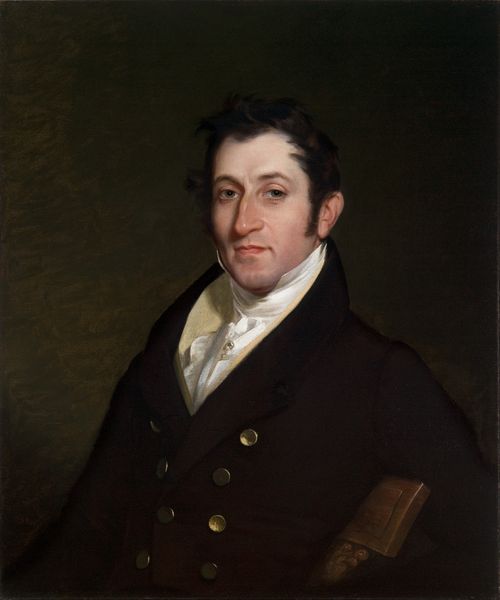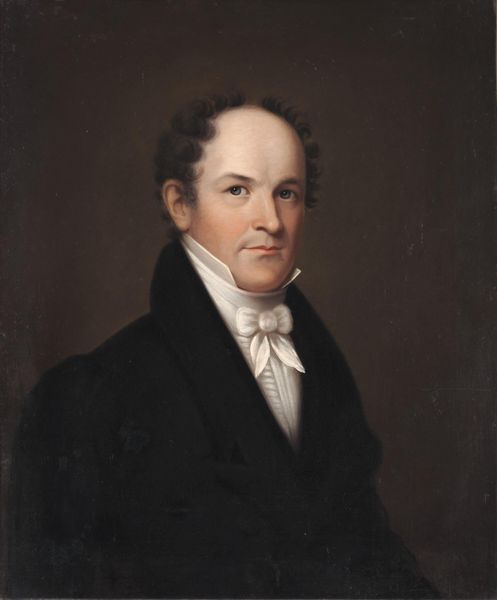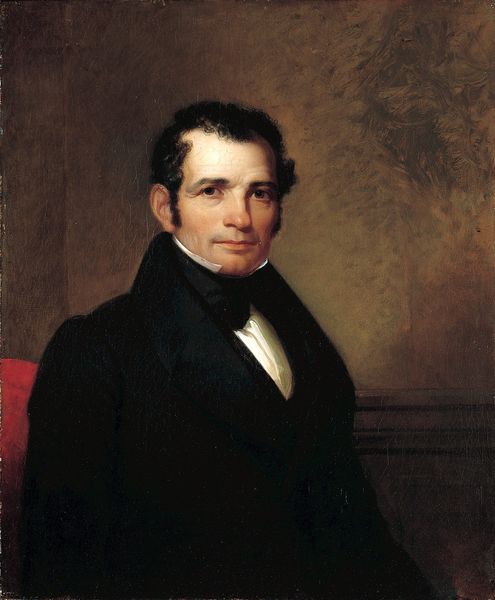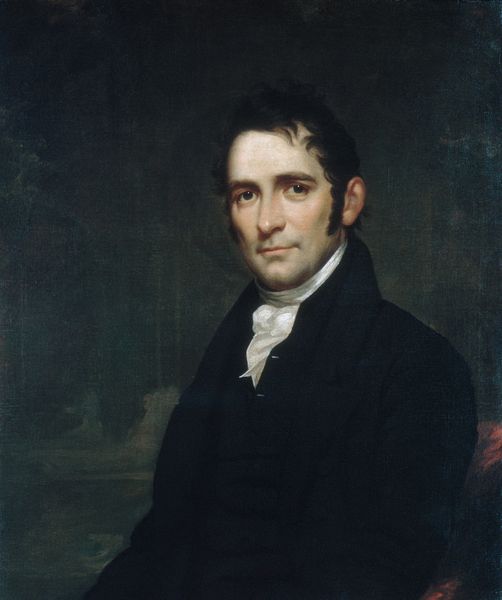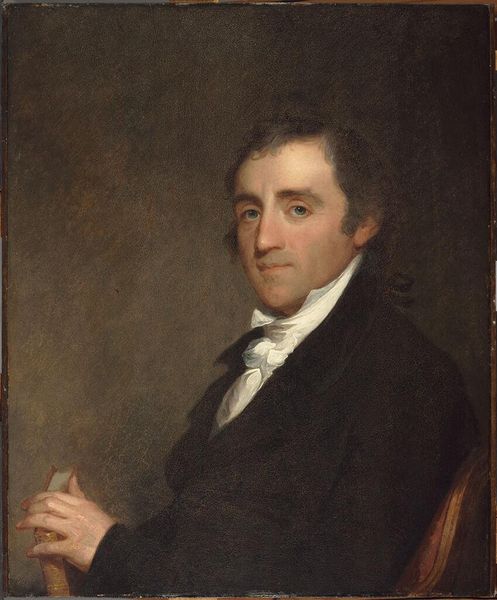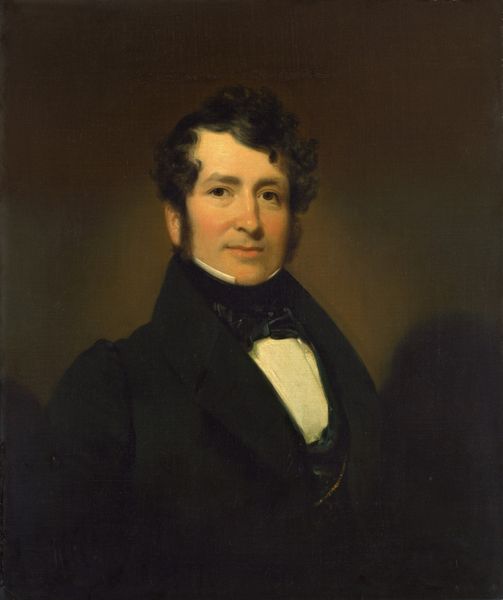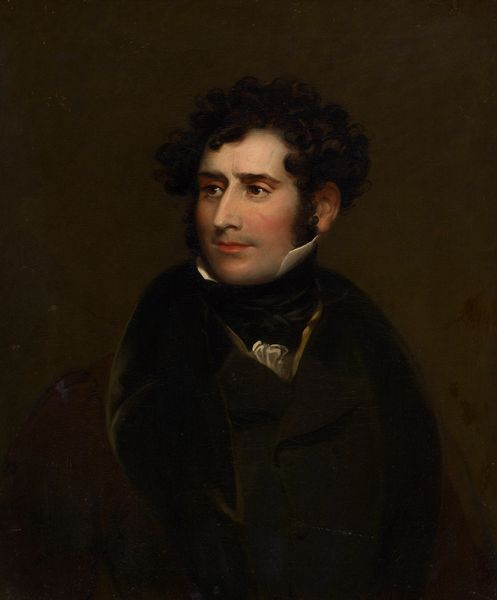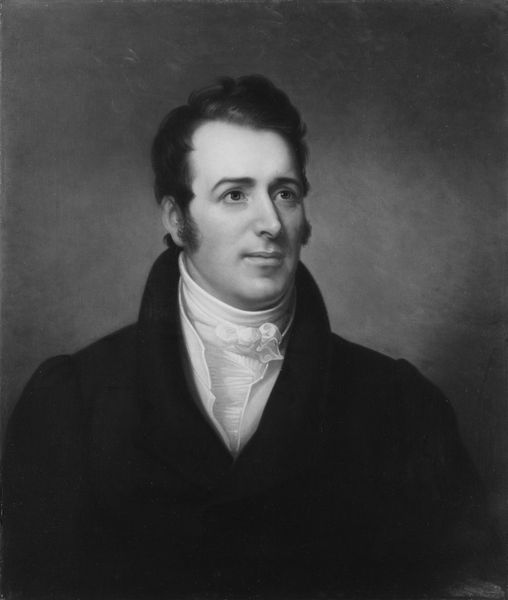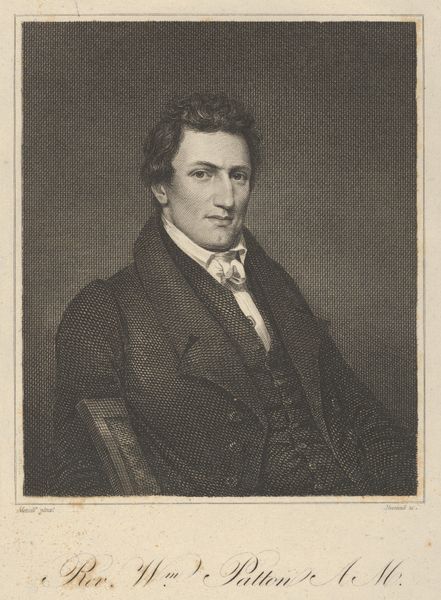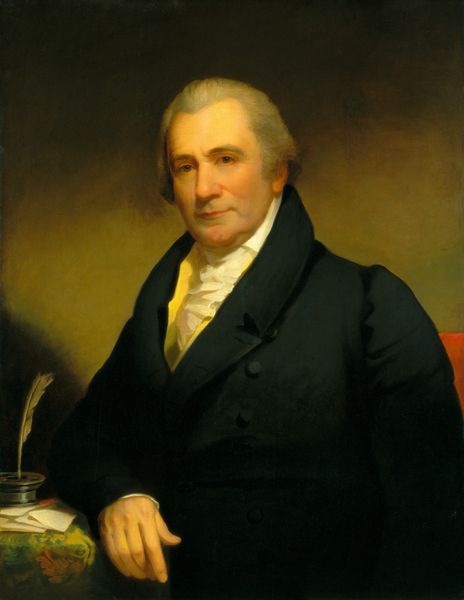
oil-paint
#
portrait
#
oil-paint
#
romanticism
#
realism
Dimensions: 33 x 25 5/8 in. (83.8 x 65.1 cm)
Copyright: Public Domain
Curator: Before us is "Henry La Tourette de Groot," painted between 1825 and 1830 by Samuel Lovett Waldo. It resides here at the Metropolitan Museum of Art. Editor: It strikes me as an intriguing portrait—a balance of formality and quiet contemplation. The figure seems grounded, yet there's a romantic undercurrent in the subtle brushstrokes. Curator: Indeed. Waldo, during this period, operated in a specific economic landscape. Commissions for portraits like this were often indicators of status, reflections of an emerging American merchant class establishing its identity. The production of oil paints at the time also influenced the availability of portraiture within new social circles. Editor: The light is remarkable, too—falling primarily on the subject's face and hands. The contrast beautifully delineates the folds in his clothes and catches the subtle reflections on the paper he holds. How do you perceive his clothing fitting into this historical context? Curator: His attire signals upward mobility. The quality of the fabric, cut, and details speak to the increased availability and trade of luxury textiles within early American markets. Note, also, how his hands and letters indicate that he participates in trade and is capable of using those new mercantile markets. Editor: Do you think the letter that the subject holds holds any importance? The positioning of it asymmetrically adds depth, but I do not read too much more into it. Curator: Well, beyond a visual contribution, it points to the communication networks that underpinned trade. I suspect he sought to signal to potential viewers of this piece that he was an intellectual, businessman, or capable man, given that the letters were costly to produce and send at the time. The brushwork is remarkable, conveying depth through shadow and form, even in its simplicity. Editor: Perhaps, though I also enjoy that that simplicity. What a lovely piece! It's amazing how a two-dimensional artwork can offer us access into someone’s existence two centuries removed from our own. Curator: Absolutely. Looking at it through both a visual and social lens allows for new avenues of exploring American history.
Comments
No comments
Be the first to comment and join the conversation on the ultimate creative platform.
